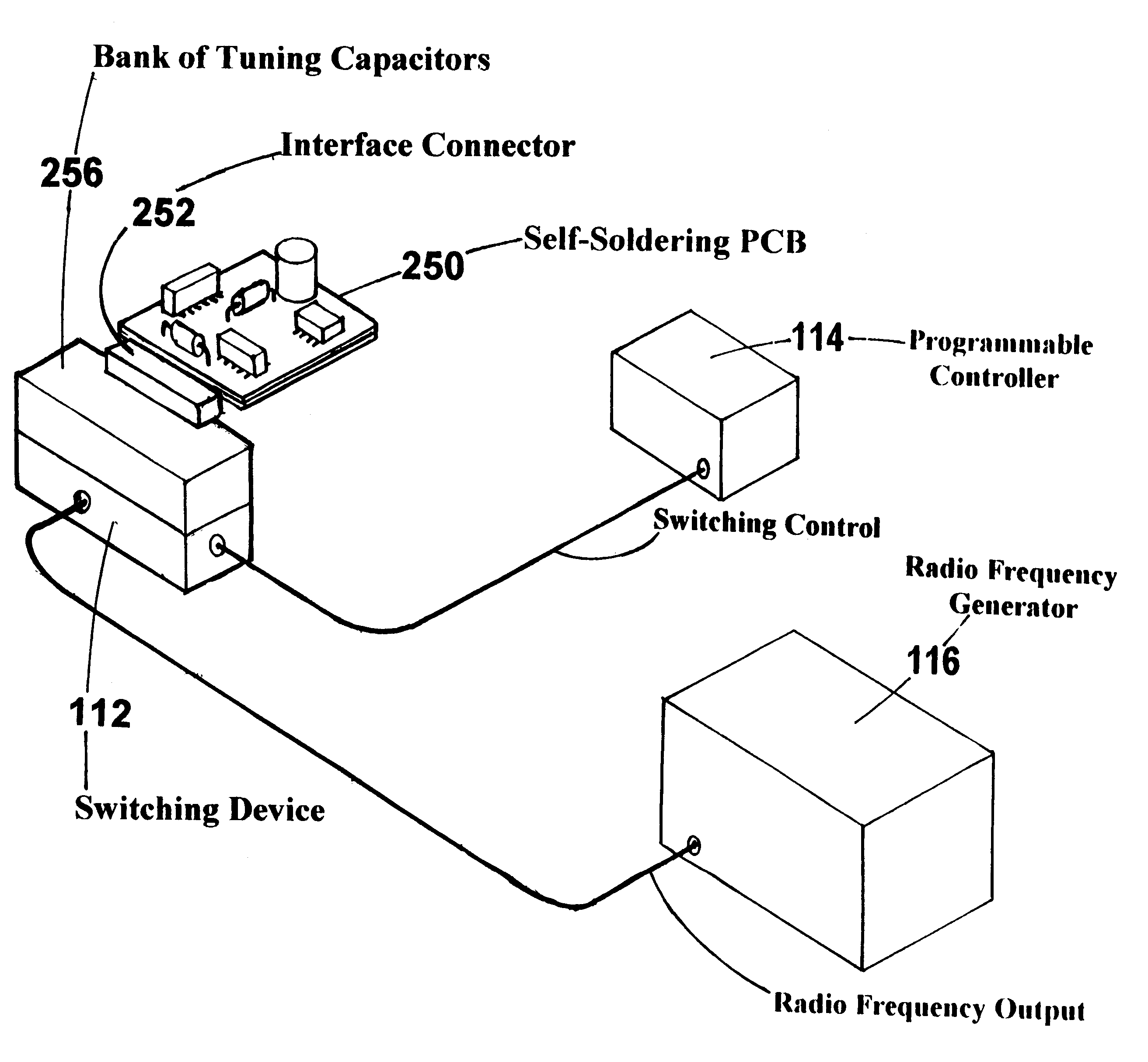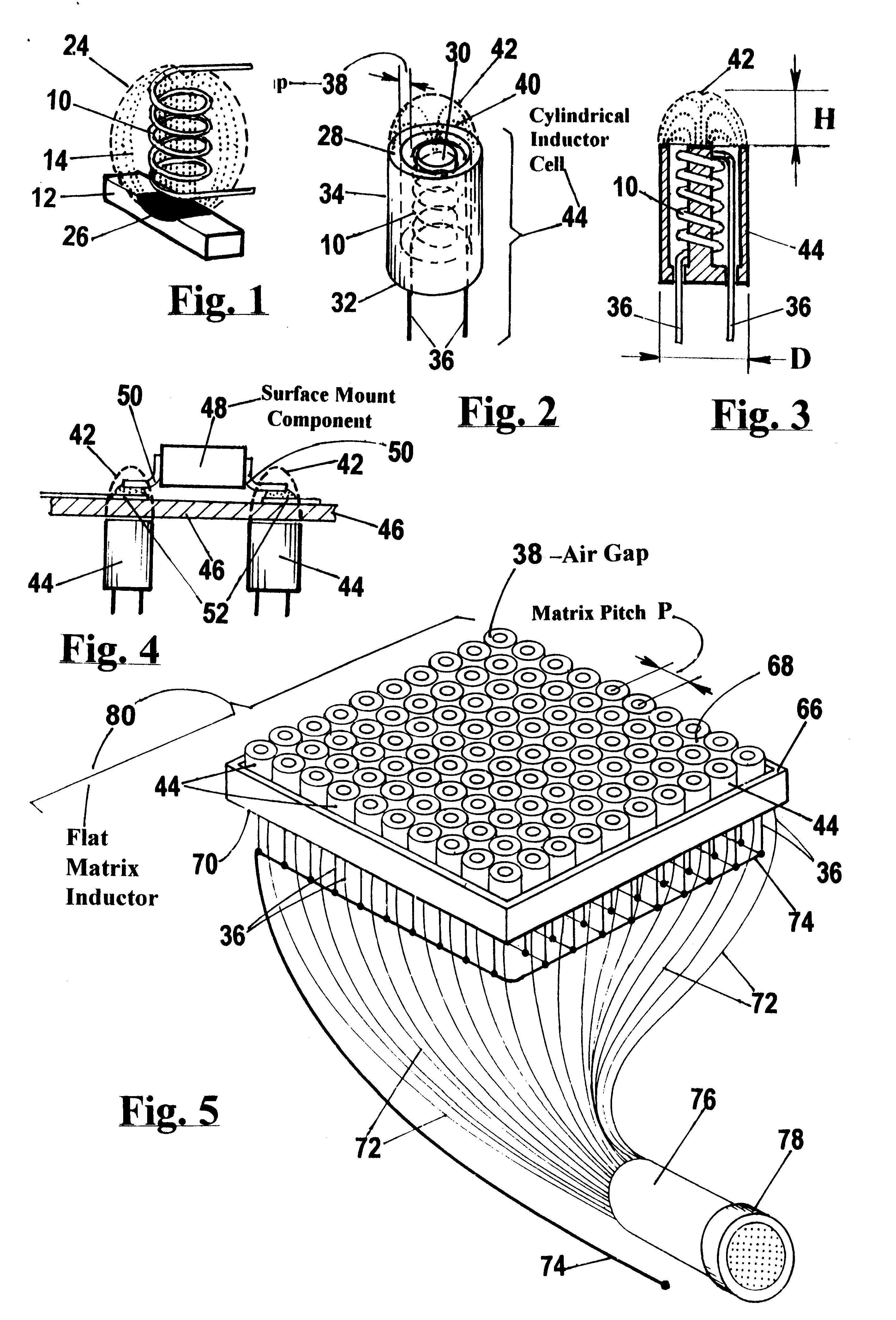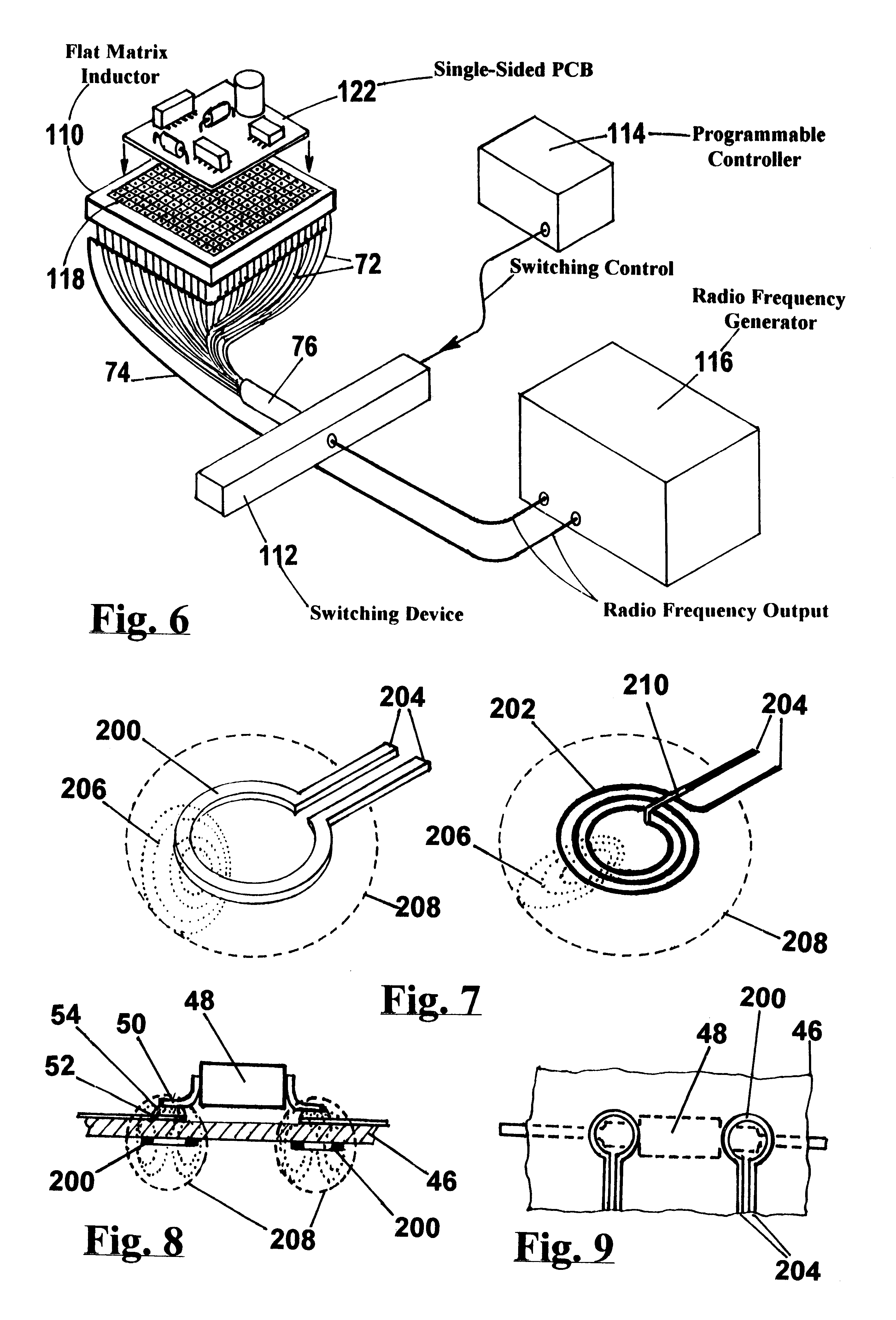Inductive self-soldering printed circuit board
a printed circuit board and self-soldering technology, applied in the direction of soldering apparatus, manufacturing tools, electric/magnetic/electromagnetic heating, etc., can solve the problems of requiring rework, generating rejections, increasing the cost of final products, etc., to improve the quality and reliability of manufactured products, reduce the cost of manufactured products, and reduce temperature exposure
- Summary
- Abstract
- Description
- Claims
- Application Information
AI Technical Summary
Benefits of technology
Problems solved by technology
Method used
Image
Examples
Embodiment Construction
Now, aided by FIGS. 7 through 25, I shall illustrate and describe the novel and non-obvious components that form part of the embodiments of this invention. Because the actual embodiments of my invention also include items-of-commerce recognized as public-domain prior-art, the preferred embodiments will be illustrated afterwards in FIGS. 26 through 30 and described in the next part of this specification.
FIG. 7 shows, in perspective view, two basic (or simple) types of "flat" inductors that are useful for the accomplishment of this invention, (a) a flat single-turn inductor 200 and (b) a flat multi-turns inductor 202. When the two terminals 204--204 of these inductors are supplied with an alternating current each inductor generates its own variable magnetic field 206, each individual field is contained within their own variable magnetic field boundary 208 (an open-air boundary 208 is symmetric about the plane containing the flat inductor.) Notice that both terminals 204--204 of induct...
PUM
| Property | Measurement | Unit |
|---|---|---|
| temperature | aaaaa | aaaaa |
| temperature | aaaaa | aaaaa |
| melting temperature | aaaaa | aaaaa |
Abstract
Description
Claims
Application Information
 Login to View More
Login to View More - R&D
- Intellectual Property
- Life Sciences
- Materials
- Tech Scout
- Unparalleled Data Quality
- Higher Quality Content
- 60% Fewer Hallucinations
Browse by: Latest US Patents, China's latest patents, Technical Efficacy Thesaurus, Application Domain, Technology Topic, Popular Technical Reports.
© 2025 PatSnap. All rights reserved.Legal|Privacy policy|Modern Slavery Act Transparency Statement|Sitemap|About US| Contact US: help@patsnap.com



